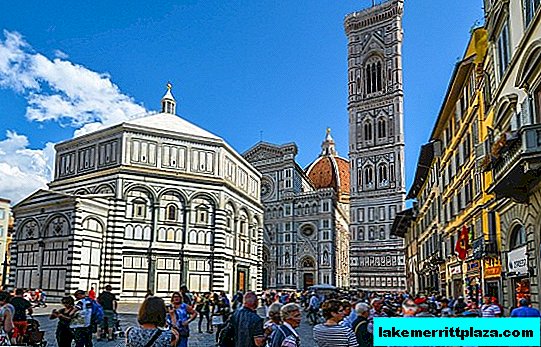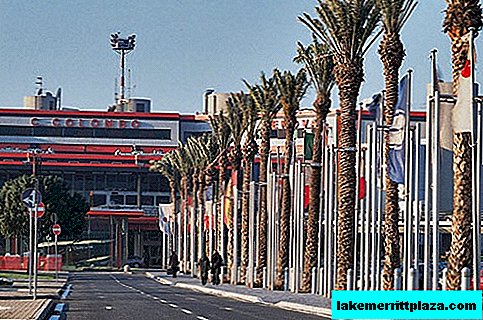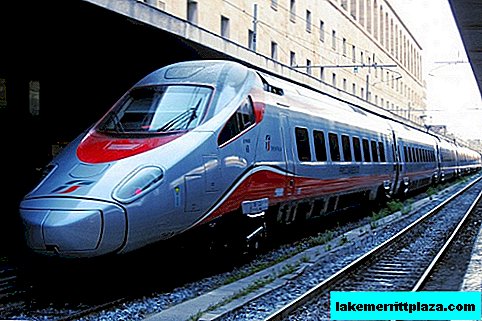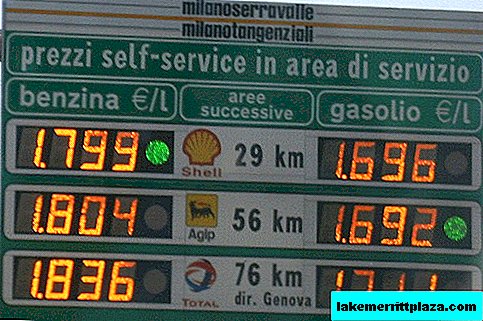Can you recall the colors of the Italian flag at random? Surely, several countries whose flags are familiar to you will come up in your memory. And it is most likely that Italy, with its green-white-red banner, will be among this group. After all, her flag is very often present in establishments selling Italian pizza, pasta or ice cream.
Flag of italy, on which strips of equal width are arranged vertically, appeared a little more than 200 years ago under the influence of the French Revolution. However, over such a long period, its design has undergone some changes.
It was a time when Napoleon's military genius manifested itself in all its splendor. The French revolution of 1789, which became the starting point in the career of the future military genius, created favorable conditions for change not only in France itself, but also far beyond its borders. The Napoleonic plan for the conquest of Italy, like other undertakings, was lightning fast and bold. The Italians enthusiastically greeted the French army liberating from Austrian rule, bearing the ideals of freedom and equality in their country.
On January 7, 1797, at the congress of the newly created Cispadan Republic, which included several Italian regions, which, under the influence of the French Revolution, proclaimed a republican form of government, a green-white-red flag was approved. But initially the stripes on the banner were located horizontally, and in the center there was an emblem in the form of a quiver with four arrows, bordered by a laurel wreath - a symbol of the unity of four cities: Modena, Bologna, Reggio and Ferrara.
And although only a few months later, with the active assistance of Napoleon, the Cisalpine Republic, allied with France, was created instead of Cispadan, the day the Republic's flag was adopted went down in history.
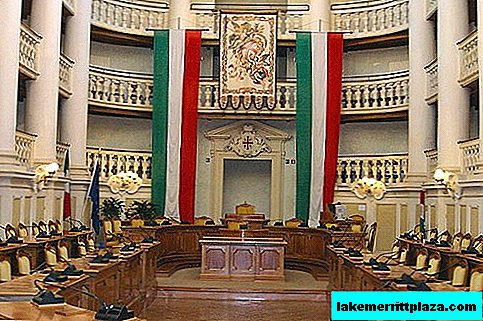
Here in 1797, the Cispadan Republic was declared
Today is January 7th. National flag day of italy (Festa del tricolore). And although this day has not yet become a nationwide weekend, yet Italians celebrate it magnificently and solemnly.
Over the years of its existence, the Italian "tricolor" had to see a lot. After the defeat of Napoleon, there was a time when he was completely banned. The second birth of the flag took place at the beginning of the Risorgimento period, when national liberation movements flashed here and there in the country. In the years 1848-1849, the banner reappeared in the hands of the rebellious people.
The flag acquired the official status of the flag of Italy during the Savoy dynasty during the creation of the independent Kingdom of Italy in 1861. Only now has the image of the crown been added to the three colors that have already become traditional, the colors on the flag of Italy.
When, after the referendum of 1946, Italy changed the monarchical system to a republican one and the royal family left the country, the Constitution of a democratic state again adopted in 1947 approved the “tricolor” with the national flag.
Three versions of the appearance of the flag of Italy
There is still no authoritative and indisputable explanation of the origin of the three-color flag of Italy. We found several versions that we want to share.
First version: some suggest that white and red were borrowed from the banner of Milan, a city very influential in those days. The green color, according to the same version, was also related to Milan - it was the color of the uniform in the Milan Civil Guard.
Second version: the Italian flag was decorated in the image and likeness of the tricolor flag of the Napoleonic army. Of the three colors, Bonaparte's favorite was green. The function of white was to emphasize the saturation of green. Red color was supposed to bring the Italian flag of distinction, so as not to confuse it with the Mexican banner.
Third version: perhaps the most romantic. According to this version, green on the flag symbolizes hope, white - faith, and red - virtue.
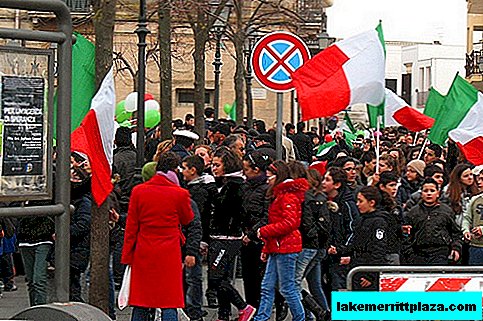
Flag Day Italians celebrate magnificent and fun
Flag of Italy. Matches & Differences
Almost all the Jacobin republics that arose on the site of the feudal-absolutist states, similar to the French one, by the end of the 18th century used tricolor flags. They differed only in color variation.
For example, it is very close in color to Italian - the flag of Ireland, which also has a green and white strip, but instead of a red strip in the Irish banner there is orange. And the flag itself, with an aspect ratio of 1: 2, the Irish flag is noticeably elongated, unlike the Italian, whose aspect ratio is 2: 3.
The twin flag of Italy is considered the Mexican flag. It contains all three colors in the same sequence, but there is also a coat of arms on a white strip. The differences also lie in the aspect ratio (the Mexican flag is 4: 7) and the color saturation (Mexico has darker colors).
In addition, the flag of Hungary, if it is rotated 90 degrees, is an exact copy flag of italy. The differences are only in the horizontal arrangement of the stripes.
Coat of arms of Italy. Dreams and Reality
The current coat of arms of Italy, created by professor of the Roman Institute of High Art Paolo Paschetto, was initially approved by the Presidential Decree in May 1948, not as a coat of arms, but as State Emblem of Italy.
From its very birth, the approved Emblem was not able to convey all the nuances and specificity of this country. Therefore, so far, both the Presidential Standard and its sea flags, instead of the state emblem, use some kind of "assorted" of the coats of arms of Amalfi, Genoa, Pisa and Venice. The need to create a coat of arms that would correspond to all the canons of the heraldic sign has ripened for a long time and it is widely discussed in the Parliament. However, further talks, the matter does not go yet. Everyone understands that creating a coat of arms of Italy - a country with such a centuries-old, colorful and rich history - is not an easy task.
The national emblem of Italy is as follows:
In the center of a steel gear wheel, symbolizing the labor state, is a star - a symbol of the armed forces of Italy. On both sides of the emblem are branches of olive and oak. At the same time, the olive implies the desire of Italians for harmony and internal harmony, and the oak speaks of the strength and dignity of this people.
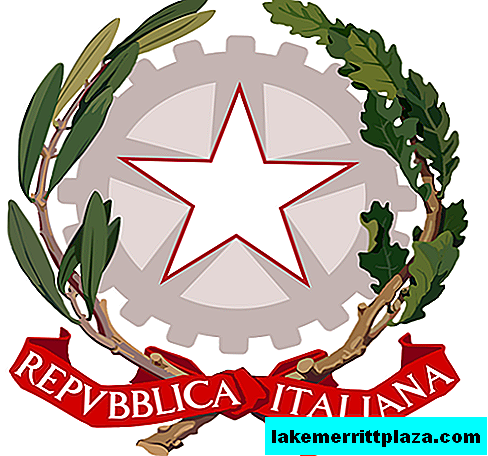
Star in the center of the Italian emblem - a symbol of the armed forces
Anthem of Italy. Supporters and Opponents
Probably, there is no country where there would periodically be no discussions about replacing the old anthem with a more modern one. So in Italy, where from 1946 until 2005 the anthem - "Song of the Italians" (better known according to the first line of the "Brothers of Italy" (Fratelli d'Italia)) - for sixty years remained in the status of "temporary", causing a lot of controversy and complaints.
On this occasion, a referendum was even held in the country, which put an end to the discussions, giving “temporary” anthem of Italy state status.
Today, written by Goffredo Mameli back in 1847 and a little later put to Michele Novaro's music, along with the flag and coat of arms, the Italian anthem is an important national symbol.
Instead of a conclusion
It so happened historically that, first of all, Italians consider themselves Romans, Sicilians, Milanese, Florentines, and only then, in fact, Italians.
Once the leader of the national association, Risorgimento Cavour, even stated on this subject that if Italy succeeded in dazzling, then in order to dazzle the Italians, one would still have to work hard. If he were still alive, he would surely still be working on it.
Therefore, such state attributes as a flag, coat of arms and anthem are of particular importance for Italy.
Although there are times when the patriotism of the nation is still breaking free. This is especially felt before football matches, when fans emotionally sing the words of the Italian anthem: “Stringiamci a coorte, siam pronti alla morte. Siam pronti alla morte, l'Italia chiamò "(Unite in cohorts, We are ready to die! We are ready to die! Italy called!).


